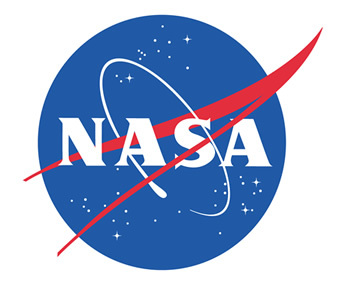Some Information On NASA
 NASA (National Aeronautics and Space Administration) was established by independent U.S. government agency in 1958 for research and development of vehicles and activities for aeronautics and space exploration. Its goals include improving human understanding of the universe, the solar system and Earth and establishing a permanent human presence in space. NASA, previously the National Advisory Committee for Aeronautics (NACA), was created largely in response to the Soviet Union’s launch of SPUTNIK in 1957. Its organization was well under way in 1961, when Pres. JOHN F. KENNEDY proposed that U.S. put a man on the Moon by the end of the 1960’s. Later unmanned programs (e.g. VIKING, MARINER, VOYAGER, GALILEO) explored other planets and interplanetary space, and orbiting observatories (e.g. HUBBLE SPACE TELESCOPE) have studied the cosmos. NASA also developed and launched various SATELLITES with Earth applications, such as LANDSAT and communications and weather satellites. It planned and developed the SPACE SHUTTLE and led the development and construction of the INTERNATIONAL SPACE STATION.
NASA (National Aeronautics and Space Administration) was established by independent U.S. government agency in 1958 for research and development of vehicles and activities for aeronautics and space exploration. Its goals include improving human understanding of the universe, the solar system and Earth and establishing a permanent human presence in space. NASA, previously the National Advisory Committee for Aeronautics (NACA), was created largely in response to the Soviet Union’s launch of SPUTNIK in 1957. Its organization was well under way in 1961, when Pres. JOHN F. KENNEDY proposed that U.S. put a man on the Moon by the end of the 1960’s. Later unmanned programs (e.g. VIKING, MARINER, VOYAGER, GALILEO) explored other planets and interplanetary space, and orbiting observatories (e.g. HUBBLE SPACE TELESCOPE) have studied the cosmos. NASA also developed and launched various SATELLITES with Earth applications, such as LANDSAT and communications and weather satellites. It planned and developed the SPACE SHUTTLE and led the development and construction of the INTERNATIONAL SPACE STATION.
Spaceflight Missions
The highly remarkable activities of NASA are its spaceflight missions comprising both manned and unmanned. The latter can be either autonomous equipped with scientific tools or supportive, testing tools for manned flights. Initially NASA focused on the space competition with the Soviet Union which eventually won the first round but after that U.S.A. assumed the leading role won victory in the final race to the Moon. Till date most of the solar system has been explored by the unmanned programs. They also came about with telescope for profound space exploration into the orbit surrounding the Earth along with satellites for studying the Earth itself.
Manned Programs
The experiments with rocket plans initiated by NACA was taken ahead by NASA which applied them support for spaceflights, the first of which was one-manned, launched by military rockets. When they focused on reaching the Moon, the solution preferred was though intricate but economical. Supportive missions comprising both manned and unmanned were launched and gigantic rockets along with spacecraft Moon-lander developed. The Moon-landing and ending of the space competition meant a fall in the motion of NASA. Permanent space stations were built with international assistance in order to bring nations close as well as to share the enormous costs of space programs. All over more than 100 manned programs have been executed by NASA since its beginning. Some of the mention worthy manned programs launched by NASA are:
- X-15 rocket plane (1959-1968)
- Project Mercury (1959-1963)
- Project Gemini (1961-1966)
- Project Apollo (1961-1972)
- Skylab (1965-1979)
- Apollo-Soyuz Test Project (1972-1975)
- Space Shuttle program (1972-2011)
Unmanned Programs
Above 1000 unmanned programs have been launched to survey the Earth and the solar system. Along with explorations, communication satellites were also launched by NASA. The missions have been launched either right from the Earth or from the revolving space shuttles.
The first unmanned satellite launched by U.S. was Explorer 1 on January 1958. Its missions have been focusing on the Earth and the Sun, gauging magnetic fields and solar winds among the other facets. A very recent earth mission was the Hubble Space Telescope which landed into orbit in 1990. Some of the mention worthy unmanned programs launched by NASA are:
- Explorer program (1958-)
- Pioneer program (1958-1978)
- Ranger program (1960-1964)
- Telstar (1962-1963)
- Mariner program (1963-1973)
- Surveyor program (1966-1968)
- Helios probes (1974-1976)
- Viking program (1975)
- Voyager program (1977)
- Echo Project (1960- 1964)
Recent Programs
NASA’s current researches include explorations of Mars and Saturn and surveys of the Earth and the Sun. Other operating spacecrafts programs comprise MESSENGER for Mercury and New Horizons for Jupiter and Pluto. The New Horizons mission to Pluto was initiated in 2006 and is currently on the way for a Pluto flyby in 2015. It has studied some of Jupiter’s inner moons.
On December 4, 2006, NASA outlined for a permanent Moon-base. The mission was to set up the Moon-base by 2020 and make it operational from 2024. But in 2009, the Augustine Committee found the program to be on an unsound route. Present U.S. President Barack Obama ordered to close down the existing plans, including the Moon-base and deviated NASA’s focus on manned missions to Mars and for the International Space Station
On September 2011, NASA prepared to launch the Orion Multi-Purpose Crew Vehicle towards the Moon, close-Earth asteroids and one day Mars. The Orion Multi-Purpose Crew Vehicle is planned for an unmanned trial launch on Delta 4 Heavy Rocket on 2013.
On August 6, 2012 NASA launched the robotic rover Curiosity on Mars.
Like it on Facebook, Tweet it or share this article on other bookmarking websites.

